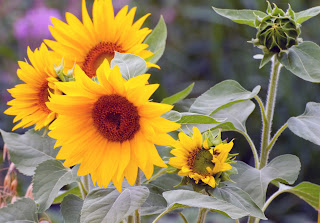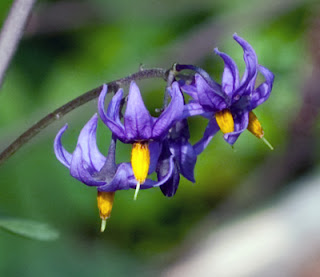A photojournal of wildlife, wild flowers and forest life in a small section of Northern Ontario, Canada.
Thursday, September 30, 2010
Hawks of The Vermilon River.
I always see these guys circling looking for prey, and they're a long way up. If I knew where they nested I'd be camped out looking for close-up shots . But it appears I have to settle for what I can get. It also makes the ID difficult, but I think they are Northern Goshawks, although Red-Tailed Hawks are native to the area. ID'ing of birds is getting more difficult. With the re-greening of the area, and global warming, new species are moving in. The other day I had to send a photo to Science North, a type of natural history museum to help in an ID.
Wednesday, September 29, 2010
Ring-Billed Gulls of the Vermilon River.
 |
| Gulls fight over food |
 |
| Mirror Image |
 |
| Gull in Flight |
 |
| Gull with Unusual Plumage |
 |
| Mid Air Collison |
Saturday, September 25, 2010
White-Throated Sparrow of the Vermilon River.
These photos were taken along the banks of the river with the complete cooperation of the sparrow. The White-Throated is just one of the many types of sparrows native to the area.
Thursday, September 23, 2010
Flowers of the Vermilon
 |
| Bull Rushes |
 |
| Devil's Paint Brush |
| Wild Sage |
 |
| Devil's Paint Brush |
 |
| Ox-Eyed Daisy |
 |
| Bee in Common Burdock |
 |
| Elecampane showing flower and buds |
 |
| Field Thistle |
 |
| Nightshade |
 |
| Unknown |
 |
| Wild Aster |
 |
| Elecampane |
 |
| Common Mullein |
 |
| Dandelion |
Wednesday, September 22, 2010
The Edible Berries.
 |
| Rippening Blueberries |
 |
| Rippened Blueberries |
 |
| Moutain Ash |
 |
| Could be chokecherries or high bush cranberries blowing in the wind. |
 |
| Same as above |
 |
| Chokecherries |
 |
| Pin Cherries |
 |
| Wild Raspberries |
Despite some inherent dangers the forest has a bountiful side supplying food in the form of edible berries for the birds and wildlife. As well the blueberries are handpicked commercially and shipped south. In the forest it gets to be a race as the blueberries are the favourites of the native black bears. Remember I said it was a wilderness forest. The raspberries are small, but incredible sweet. The pin cherries are tart but make a great jelly that a friend makes for us. No one eats the mountain ash berries, but the wildlife. The berries provide my energy food when I'm hiking or waiting at a wetland to see what's around.
The Same Family: Blue Jays, Ravens and Crows
Blue jays are squawky, flighty birds and when they spot you in the forest everything else is alerted as well . Nevertheless, they're colourful, and this one was almost posing. The crows here are huge and do quite well from their scavenging. As well they are beautiful fliers. The raven is very well established in aboriginal legend as a trickster, and its a pleasure to see him on our journeys.
 |
| American Crow |
 |
| Crow In Flight |
 |
| Raven |
Tuesday, September 21, 2010
Canada Geese Cont'd
These are other photos taken of Canada Geese in the early spring with the ice on the river which accounts for their flying mishaps, and later with their goslings. I noticed that the geese have about 5 goslings which declines to 2 over the summer, likely the result of predators.
Subscribe to:
Posts (Atom)




















